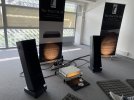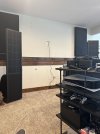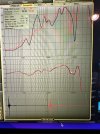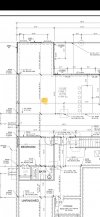Gwreck
Senior Member
- Joined
- Aug 20, 2022
- Messages
- 322
- Likes
- 327
I could do a function review with pictures. Other than BACCH and my umik-1, I use for Dirac,I don’t have any decent gear for audio measurements. (I was thinking of using REW to check for Bass response issues).Since I last posted in this thread, I have experimented a bit with Ambio One which is a free Ambiophonics VST plugin in JRiver. My issue is that tuning it is by ear only. I am not aware of any measurements that can be done to show that they are optimally dialled in. The effect of twiddling those knobs is actually night and day but NOT in a good way. It ranges from subtle increase in depth, width, and precision of the soundstage, to dramatic changes in these parameters but with a "phasey" and hollowed out kind of sound that frankly sounds weird. I never did get satisfactory results from Ambio One, so I am looking for a more objective approach.
I understand that Choueri worked with Ralph Glasgal when ambiophonics RACE (Recursive Ambiophonic Crosstalk Elimination) algorithm was developed. Choueri then developed BACCH. There are a number of VST's that use RACE, e.g. Ambio One (developed by Glasgal?), AmbiophonicsDSP (defunct), SoundPimp, and maybe a few others. The advantage of all those VST's are that they run on Windows and they are substantially cheaper. The disadvantage is that none of them can be set up with measurements, none have head tracking, and they all require narrow speaker angles to work properly. The lack of being able to guide your settings with measurements is what is killing the deal for me with all these non-BACCH ambio plugins.
So, I was wondering if you would be keen to do a review on BACCH from an "objectivist" perspective, with measurements and subjective listening impressions of various settings. All current reviews on BACCH are subjective, I have not found a single one that explains what settings are available and what effect it has. Not even a screenshot, apart from what you have provided.
I have tried multiple versions of RACE and the only one that was even close to listenable was the mini-ambio plug-in for the MiniDSP. Even then BACCH is better is every aspect. It’s still available but was once its own special mini DSP unit. https://www.minidsp.com/products/plugins/ambiophonics-detail



